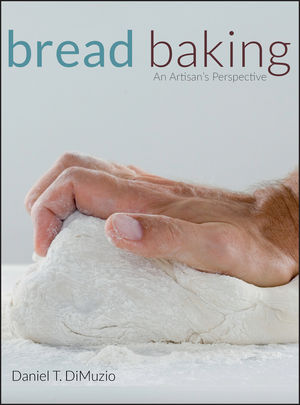|
Textbook
Bread Baking: An Artisan's PerspectiveISBN: 978-0-470-13882-3
Hardcover
272 pages
February 2009, ©2010
 |
||||||
Preface ix
1 The History of Bread Making 1
A Brief History of Bread Making 2
Bread’s Impact on Basic Survival 2
A Cornerstone of Civilization 2
How Bread Began 3
Bread: An Accidental Creation 3
Mechanized Bread Making 6
Direct Mixing Method 7
World War II and Its Aftermath 7
The Intensive Mix Method 8
Rescue Arrives —The Improved Mix Method 9
Renewed Interest in Great Bread 11
2 Ingredients and Their Effects 13
Ingredients for Baking Bread 14
The Most Important Ingredient: Flour 14
Wheat Dough Can Inflate 15
The Wheat Berry 15
Wheat Classification 16
Other Grains 18
Water 19
Salt 20
Yeast 21
Sweeteners 23
Fats and Oils 23
Milk Products 24
Eggs 24
Nuts, Seeds, Grains, and Dried Fruits 25
Using Whole Grains 25
Herbs and Spices 27
3 Basic Baker’s Percentage (Baker’s Math) 31
An International Language for Bakers 32
It’s All in the Percentages 32
Changing Batch Sizes 35
Find the Total Flour Weight: Using the Percentage Sum 36
Discrepancies in Batch Size 38
When You Have Two or More Flours 38
4 Mixing Methods 41
The First 10,000 Years: Hand Mixing 42
Two Stages in the Dough Mixing Process 42
Dough Transformation During Mixing 43
Precursors to Mechanized Mixing 43
Mechanization Arrives: The Short Mix Method 44
Intensive Mix Method 44
The Improved Mix Method 47
Is There a Best Mixing Method? 47
Special Circumstances or Exceptions 50
5 Fermentation 61
Fermentation: A Process of Transformation 62
Does Fermentation Create or Destroy? 62
Fermentation of Bread Dough 63
Yeast Fermentation: Produces Carbon Dioxide and Alcohol 64
Bacterial Fermentation: Produces Organic Acids 65
Nonliving Organic Substances: Esters and Enzymes 66
Manipulating Fermentation: Time, Temperature, and Hydration 67
Pre-Ferments: How to Shorten Fermentation Time While Increasing Strength and Flavor 68
Natural Pre-Ferments 70
6 Division and Shaping of Loaves and Rolls 77
Giving Form to Dough 78
The First Step: Division 78
Shaping Loaves and Rolls 82
7 Proofing and Retarding 105
Proofing Defined 106
Judging the Readiness of Proofed Loaves 106
Proofing versus Bulk Fermentation 107
Collapse of Overproofed Dough 107
Gas Production in Successful Proofing 107
Changing the Temperature of Dough 108
Yeast Quantity in Dough 110
The Degradation of Dough Structure 110
Retarding Loaves of Bread 111
Dough Degradation in Retarding 113
Specialized Equipment for Proofing and Retarding Loaves of Bread 113
8 Baking 121
Baking Transforms Raw Dough 122
Recognizing When Loaves are Ready to Be Baked 122
Scoring Loaves 122
Baking Temperature 125
Using Steam 127
How to Judge the Doneness of Bread 130
The Importance of Cooling Bread after Baking 131
9 Rich and Laminated Doughs 137
The Effects Ingredients Have on Dough 138
Strategies for Turning Lean Dough into Rich Dough 139
Why Not Just Add the Fat to the Dough? 139
Lamination Defined 140
The Lamination Process 142
Differences between Croissant Dough and Danish Dough 148
Some Caveats in Working with Laminated Dough Products 149
Shaping Croissants and Danish 149
10 Creating Dough Formulas 155
Formulation: How Can We Design Our Own Reliable Bread Dough? 156
Choose Your Ingredients 157
Create a Formula, Not Just a Recipe 159
Advanced Topic #1: Flour Composition and Milling Technology 173
Elements of the Wheat Endosperm 173
The Milling Process 178
Advanced Topic #2: Advanced Baker’s Percentage 181
Using Pre-Ferments in Formula Creation 181
Which Pre-Ferment Should You Use? 183
Advanced Topic #3: Controlling Fermentation: Living and Nonliving Players 185
Controlling Yeast Activity 185
Controlling Bacterial Activity 186
Enzymes: Amylase and Protease 187
Advanced Topic #4: Decorative Dough Pieces 189
Working with Decorative Dough 189
Types of Decorative Dough 189
Appendix: Formulas 193
Glossary 237
Bibliography 247
Index 249



